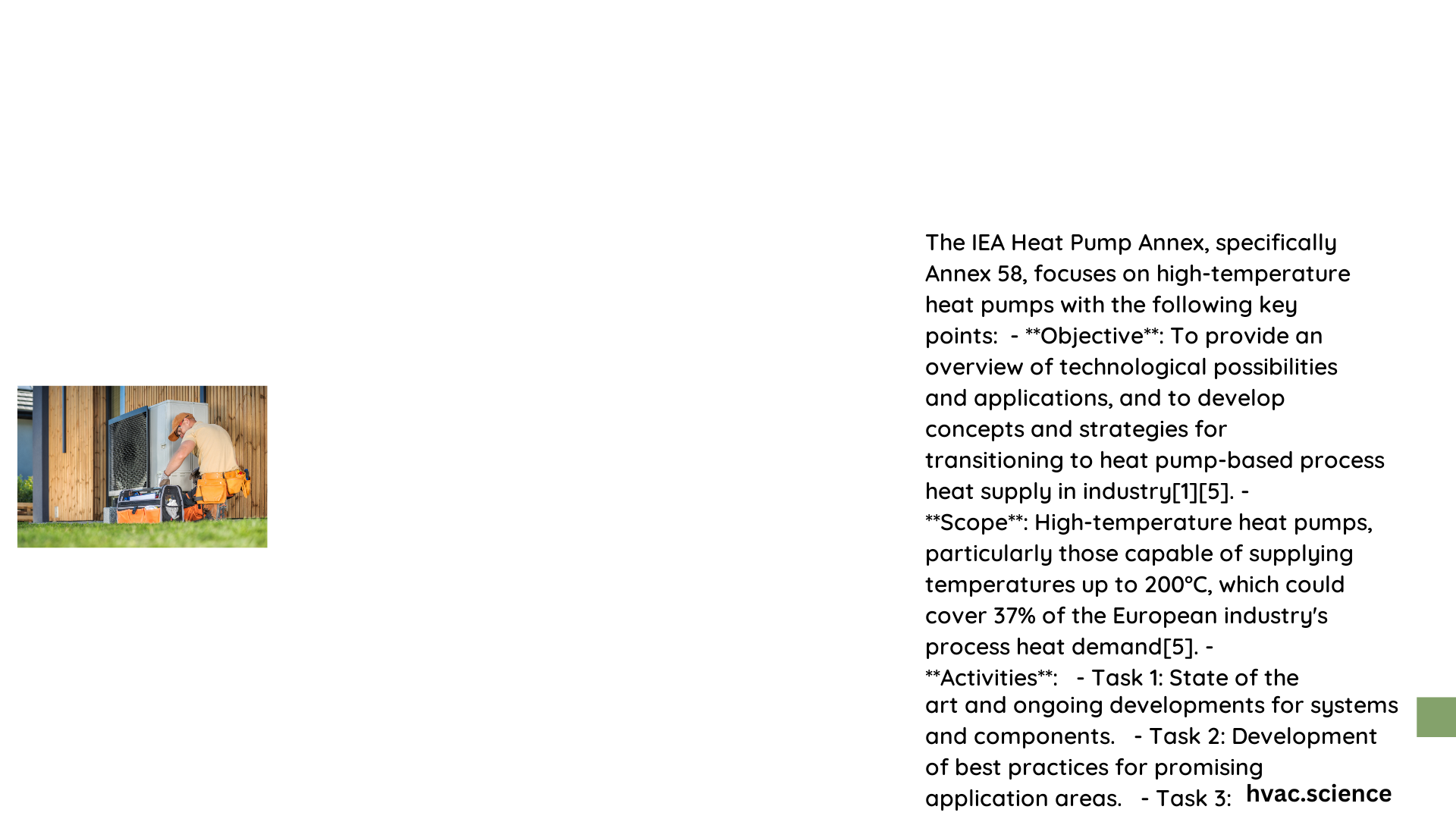The International Energy Agency (IEA) Heat Pump Annex represents a collaborative international effort to advance heat pump technologies, develop comprehensive standards, and promote energy-efficient solutions across various sectors. These annexes provide critical research, guidelines, and performance metrics that drive innovation in thermal energy systems, addressing global challenges in energy consumption, carbon emissions, and sustainable heating and cooling technologies.
What Are the Core Objectives of IEA Heat Pump Annex?
The IEA Heat Pump Annex initiatives focus on multiple critical aspects of heat pump technology:
- Performance Standardization
- Develop uniform calculation methods
- Create comprehensive testing procedures
-
Establish performance benchmarks
-
Technological Innovation
- Research high-temperature heat pump applications
- Explore advanced system configurations
-
Analyze emerging heat pump technologies
-
Energy Efficiency Optimization
- Calculate Seasonal Performance Factors (SPF)
- Evaluate primary energy consumption
- Reduce carbon emissions
How Do IEA Heat Pump Annexes Define Performance Metrics?

Calculation Methods and Standards
The annexes utilize sophisticated approaches to measure heat pump performance:
| Calculation Path | Key Characteristics | Standard Reference |
|---|---|---|
| Path A | Full load capacity and COP | EN 14511 |
| Path B | Performance at various load conditions | EN 14825 |
Key Performance Indicators
- Seasonal Performance Factor (SPF)
- Coefficient of Performance (COP)
- Energy Efficiency Ratio (EER)
What Technological Domains Do IEA Heat Pump Annexes Cover?
High-Temperature Heat Pumps
IEA HPT Annex 58 specifically addresses industrial heat pump applications:
- Comprehensive state-of-the-art review
- Best practice scenario development
- Industrial heat pump specification guidelines
Residential and Commercial Systems
IEA HPP Annex 28 focuses on:
– Combined heating and domestic hot water systems
– Bin method for performance calculation
– Energy Performance of Buildings (EPBD) integration
What Are the Practical Implementation Guidelines?
Design and Planning Strategies
- Analyze building heating and cooling demands
- Characterize existing HVAC systems
- Develop hydraulic and thermal storage requirements
- Establish operating management protocols
Challenges and Considerations
- Technological adaptation
- Regular standard updates
- Efficient operation under variable load conditions
- Advanced control strategy development
What Environmental and Economic Benefits Emerge?
Energy Savings Potential
- Reduced primary energy consumption
- Lower carbon emissions
- Improved system efficiency
- Cost-effective heating solutions
Economic Impact
- Potential long-term cost reductions
- Enhanced system lifespan
- Increased renewable energy integration
Conclusion
The IEA Heat Pump Annex represents a pivotal international collaboration driving heat pump technology forward, offering comprehensive guidelines, performance standards, and innovative research that accelerates sustainable energy solutions.
